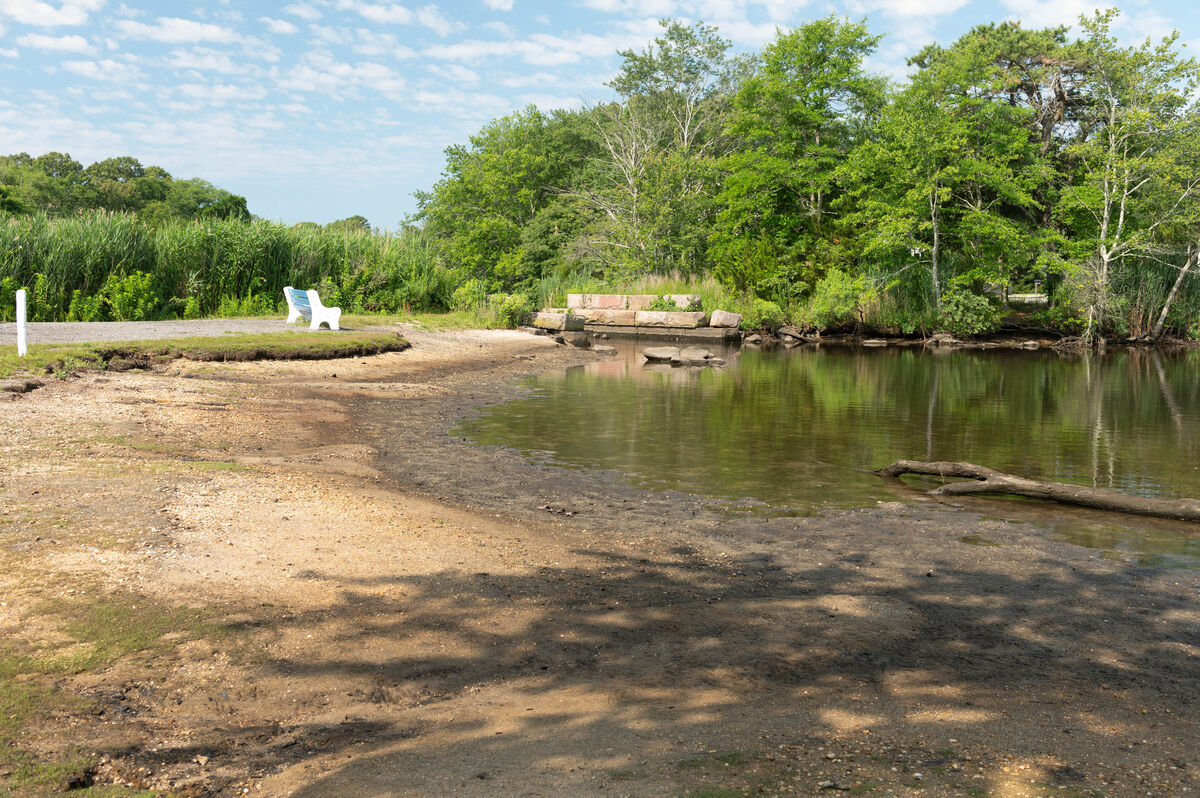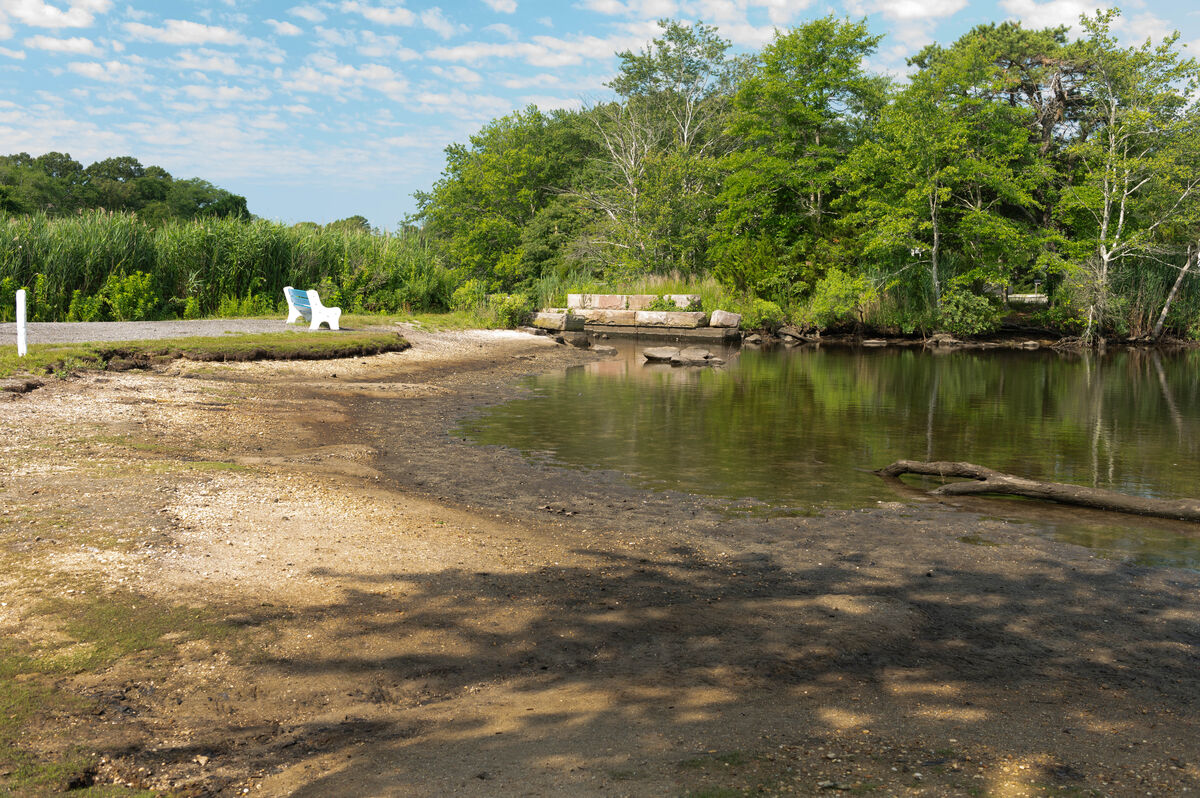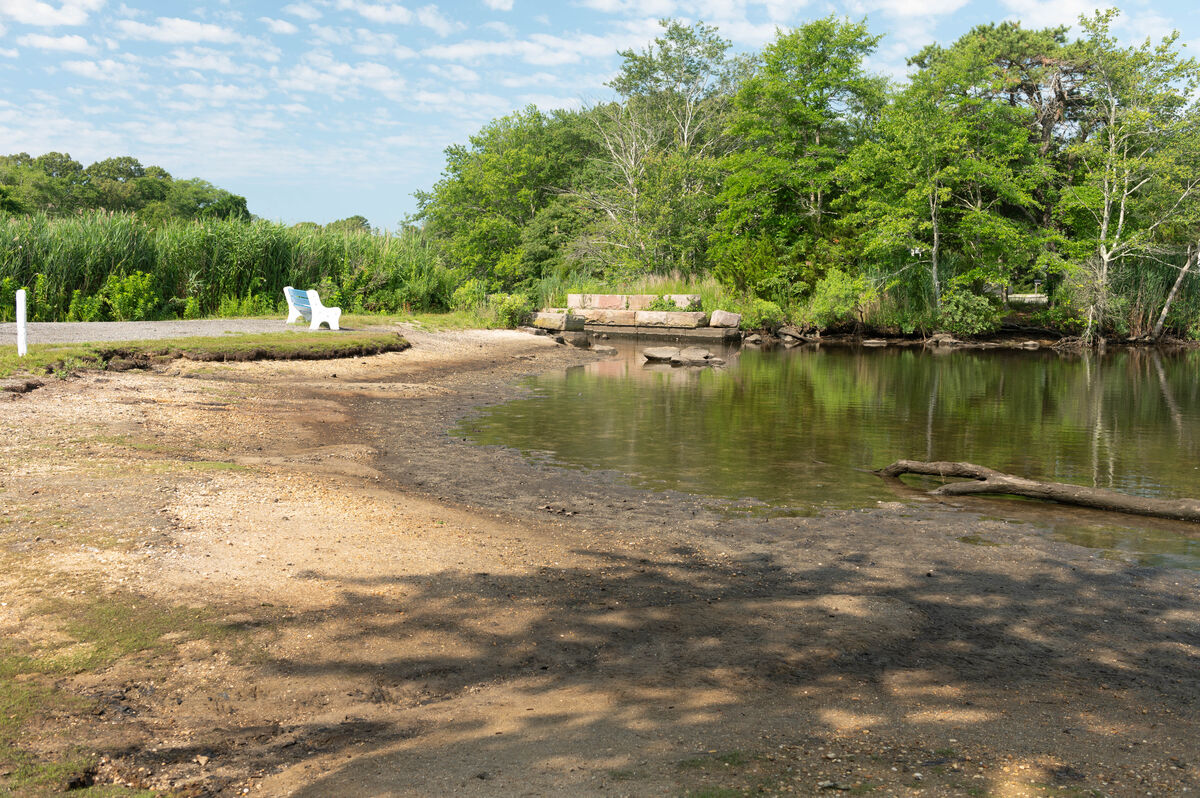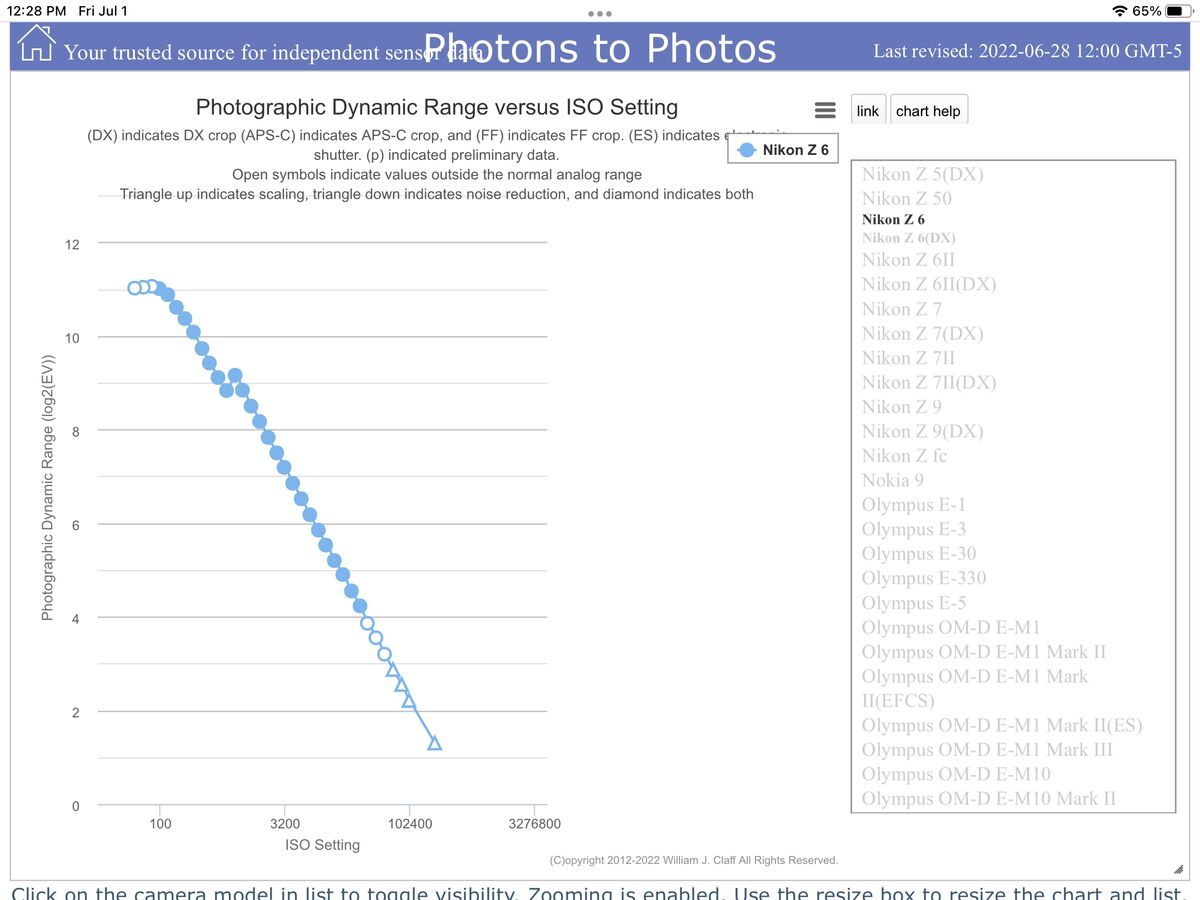First try at ETTR/EBTR
Jul 1, 2022 10:56:27 #
Bob Malarz suggested, after viewing my post of the Phantom on the Yorktown, that I look into ETTR/EBTR. So, I decided to consult an instructional video by Adorama TV. Then, having a better understanding of the technique, I tried some test shots. (not great photos; but I was looking for a subject that had both bright highlights and dark shadows.
My first shot is with the camera's (Nikon Z6) meter indicating a proper exposure.
The second shot is proper exposure +2 stops. The idea behind ETTR/EBTR is that you shoot at a level that would be overexposed but not clipping the highlights. I actually went slightly beyond the clipping point (EBTR) by adding two stops of exposure. Then, in lightroom I reduced the exposure by two stops. (that is the photo I posted). I found that the post on the right and the bench were still blown out and flashing red.
The third shot is proper exposure +1 stop. Once adjusted, the post and bench are only very slightly blown out according to LR. Parts of the bench had red spots on the image in LR indicating that those areas are still blown out even though I adjusted the exposure.
Once I posted the images and then looked very closely again, I think the sky and the foliage are more vibrant in the second photo. So, maybe going beyond the right slightly and then darkening by a similar amount does produce slightly better results.
These were shot in Raw and only exposure adjustments were made. No other processing to keep things even.
My first shot is with the camera's (Nikon Z6) meter indicating a proper exposure.
The second shot is proper exposure +2 stops. The idea behind ETTR/EBTR is that you shoot at a level that would be overexposed but not clipping the highlights. I actually went slightly beyond the clipping point (EBTR) by adding two stops of exposure. Then, in lightroom I reduced the exposure by two stops. (that is the photo I posted). I found that the post on the right and the bench were still blown out and flashing red.
The third shot is proper exposure +1 stop. Once adjusted, the post and bench are only very slightly blown out according to LR. Parts of the bench had red spots on the image in LR indicating that those areas are still blown out even though I adjusted the exposure.
Once I posted the images and then looked very closely again, I think the sky and the foliage are more vibrant in the second photo. So, maybe going beyond the right slightly and then darkening by a similar amount does produce slightly better results.
These were shot in Raw and only exposure adjustments were made. No other processing to keep things even.
Camera set at "proper" exposure. Nothing indicated as blown out in LR

(Download)
Shot at +2 stops according to light meter in camera. LR adjustment -2 stops exposure only. Whites still indicate as blown.

(Download)
Shot at +1 stop according to light meter in camera. LR adjustment -1 stop exposure only. Whites very slightly blown according to LR.

(Download)
Jul 1, 2022 11:42:13 #
Number 2 was my pick also before I read all of your post. The sky color is a bit better as well as the aspects you mentioned.
Jul 1, 2022 11:45:38 #
Each camera is different in the amount of ETTR exposure that will result in max DR without blowing highlights - experimentation until you learn the characteristics of your camera is key. If your camera is a Canon and it’s supported., Magic Lantern (free) SW that you load on your camera will give you a raw histogram. Alternately, a copy of Raw Digger SW (not expensive) will give you accurate exposure data for each of the 3 color channels - a valuable tool and more precise than judging images. And most post processing applications allow you to read the color values of various points in the image as you mouse over them.
BTW, if the image has a wider DR than the camera’s sensor is capable of at the ISO you’re shooting, even ETTR won’t fix the issue - that’s a case for HDR. Just remember that DR decreases with increasing ISO, so for wide DR scenes, try to shoot as low an ISO as possible (and use your carefully determined ETTR)
BTW, if the image has a wider DR than the camera’s sensor is capable of at the ISO you’re shooting, even ETTR won’t fix the issue - that’s a case for HDR. Just remember that DR decreases with increasing ISO, so for wide DR scenes, try to shoot as low an ISO as possible (and use your carefully determined ETTR)
Jul 1, 2022 11:59:46 #
In extreme lighting I would use ETTR only if I had the skills and the tools that I would need to be totally confident of avoiding blown highlights. If for some reason I couldn't use exposure bracketing I would expose to save the highlights. I would also use as low an ISO as possible since I would be anticipating that the result would require a lot of pushing and pulling in PP.
In your posted shot, if you considered the highlights to be of primary importance you would be thinking of using negative EC or possibly Highlights Protected metering (if you have it), or possibly keeping a VERY close eye on your histogram - but it looks like normal metering on its own would still be very likely to give blown highlights. IMO if ETTR results in blown highlights then it has failed.
In your posted shot, if you considered the highlights to be of primary importance you would be thinking of using negative EC or possibly Highlights Protected metering (if you have it), or possibly keeping a VERY close eye on your histogram - but it looks like normal metering on its own would still be very likely to give blown highlights. IMO if ETTR results in blown highlights then it has failed.
Jul 1, 2022 12:00:29 #
Cwilson341 wrote:
Number 2 was my pick also before I read all of your post. The sky color is a bit better as well as the aspects you mentioned.
Agreed. Not sure it is something I'm going to do often; but for landscapes when you are on a tripod and have time, the technique could be helpful.
Erich
Jul 1, 2022 12:05:11 #
That is really good information. Thank you. I did not know that DR is dependent on ISO. I try to shoot at my base ISO whenever possible. It looks like My Nikon Z6 starts blowing out the highlights about 1 2/3 stops above "proper" exposure. I'll definitely experiment more. Thanks again for the really good information.
Erich
Erich
Jul 1, 2022 12:09:50 #
R.G. wrote:
In extreme lighting I would use ETTR only if I had... (show quote)
I've had really good results in the past with bracketing. I think that there is a definite danger with ETTR to blow the highlights. Once you do that, you won't get them back and the ETTR has, as you mentioned, failed. There is so much to learn in this hobby. That is probably what keeps me interested in it.
Erich
Jul 1, 2022 12:21:26 #
ebrunner wrote:
...It looks like My Nikon Z6 starts blowing out the highlights about 1 2/3 stops above "proper" exposure....
That depends totally on the metering and the proportions of dark and bright in the scene. The worst scenario is when the scene has large dark areas and small, bright areas. Your posted shot has large dark areas (the shadowed foreground, the wet mud and the river) and small bright areas (the bench and bits of the clouds) while the vegetation is only moderately bright.
If the mud had been even wetter - and therefore darker - the camera would have metered for the preponderance of darkness and the highlights would have been even more blown. The same thing would have happened if you'd changed the composition to include even more of the dark areas. In either of those scenarios you wouldn't have had 1 2/3 stops of headroom - it would have been less. Using the in-camera metering leaves you susceptible to blown highlights because of the inconsistencies associated with how it meters the scene. Change the relative proportions of the sizes of the bright and dark areas and the metering will change. Change the intensities of the bright and the dark areas and the metering will change.
Jul 1, 2022 12:29:08 #
Jul 1, 2022 12:30:28 #
ebrunner wrote:
That is really good information. Thank you. I did not know that DR is dependent on ISO. I try to shoot at my base ISO whenever possible. It looks like My Nikon Z6 starts blowing out the highlights about 1 2/3 stops above "proper" exposure. I'll definitely experiment more. Thanks again for the really good information.
Erich
Erich
Here’s a DR vs ISO graph of your camera. As you can see, the DR drops very quickly as you increased ISO, starting at 11 stops at base ISO and dropping all the way to 5.5 at ISO 10,000.

Jul 1, 2022 13:42:48 #
R.G. wrote:
That depends totally on the metering and the propo... (show quote)
I had not thought about the ratio of dark areas to white areas. That makes good sense. It was already mentioned that there needs to be much experimentation. Sounds good to me.
Erich
Jul 1, 2022 13:47:59 #
UTMike wrote:
Thanks for this thread, Erich, it provides good information.
The original idea of FYC was that the section would be a place not just for : Ohh, nice photo....although that is certainly part of it. We hoped that it would become an area where people post idea, concepts, examples of all things photographic that might generate conversations. Very often I'll post photos just for others to look at and evaluate. Whenever I think of a problem or an issue that I'm working through in my photography, I like to post photos and add text that will give some indication of what I'm thinking about at the time. Then, when others see it, they react with their own expertise and we all benefit.
Erich
Jul 1, 2022 13:51:44 #
TriX wrote:
Here’s a DR vs ISO graph of your camera. As you can see, the DR drops very quickly as you increased ISO, starting at 11 stops at base ISO and dropping all the way to 5.5 at ISO 10,000.
I never knew these graphs exist. Very good information. Thanks. There are, then, many reasons other than noise for choosing a low ISO. Thanks.
erich
Jul 2, 2022 14:40:56 #
Erich, TriX is correct in that each camera is different, even the same model camera may have slightly different capabilities. Controlled testing is the only way to determine where your camera gives up capturing details on the high end. Personally, I wish it were easy to change from one Zone to another by simple shutter speed or aperture change. Unfortunately, it's not that simple.
Testing is the method to determine where that failure point is. At that point, one can determine the number of Zones per stop. One of my cameras takes just over 2-1/2 stops to reach a highlight boundary that is unretrievable. This means that 5 Zones are covered by 2-1/2 stops. Thus, if I want to use specular reflections in the scene for metering, I can increase the exposure by just over 2-1/2 stops. If I spot meter on the brightest part of the scene with visible texture, I'll increase my exposure suitably to place that part of the scene in Zone VIII.
In processing, I'll use the histogram to make the exposure adjustment to compensate for the additional exposure during the initial capture. But, without testing it's a crap shoot as to how much additional exposure to give an image at capture time. I use this method 99% of the time when doing digital photography.
--Bob
Testing is the method to determine where that failure point is. At that point, one can determine the number of Zones per stop. One of my cameras takes just over 2-1/2 stops to reach a highlight boundary that is unretrievable. This means that 5 Zones are covered by 2-1/2 stops. Thus, if I want to use specular reflections in the scene for metering, I can increase the exposure by just over 2-1/2 stops. If I spot meter on the brightest part of the scene with visible texture, I'll increase my exposure suitably to place that part of the scene in Zone VIII.
In processing, I'll use the histogram to make the exposure adjustment to compensate for the additional exposure during the initial capture. But, without testing it's a crap shoot as to how much additional exposure to give an image at capture time. I use this method 99% of the time when doing digital photography.
--Bob
ebrunner wrote:
Bob Malarz suggested, after viewing my post of the... (show quote)
Jul 2, 2022 18:41:22 #
If you want to reply, then register here. Registration is free and your account is created instantly, so you can post right away.





